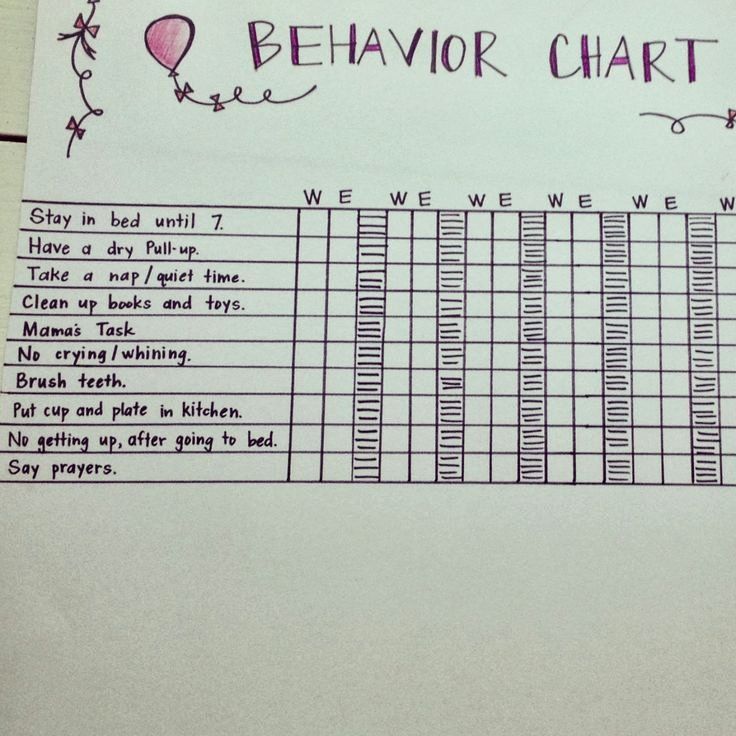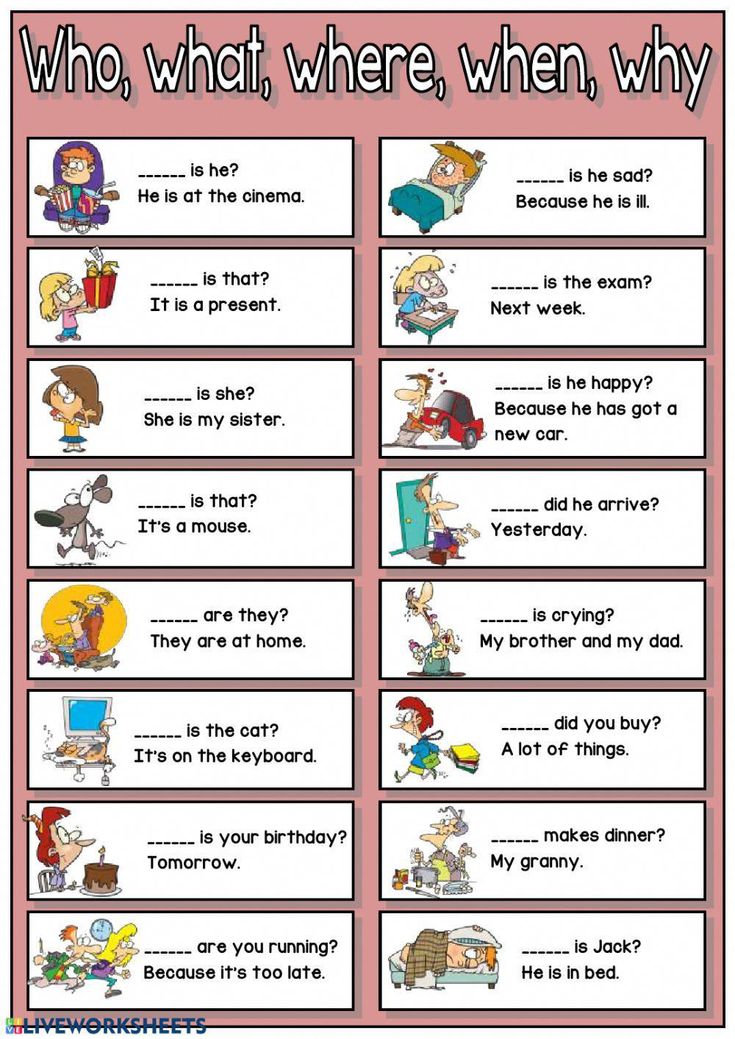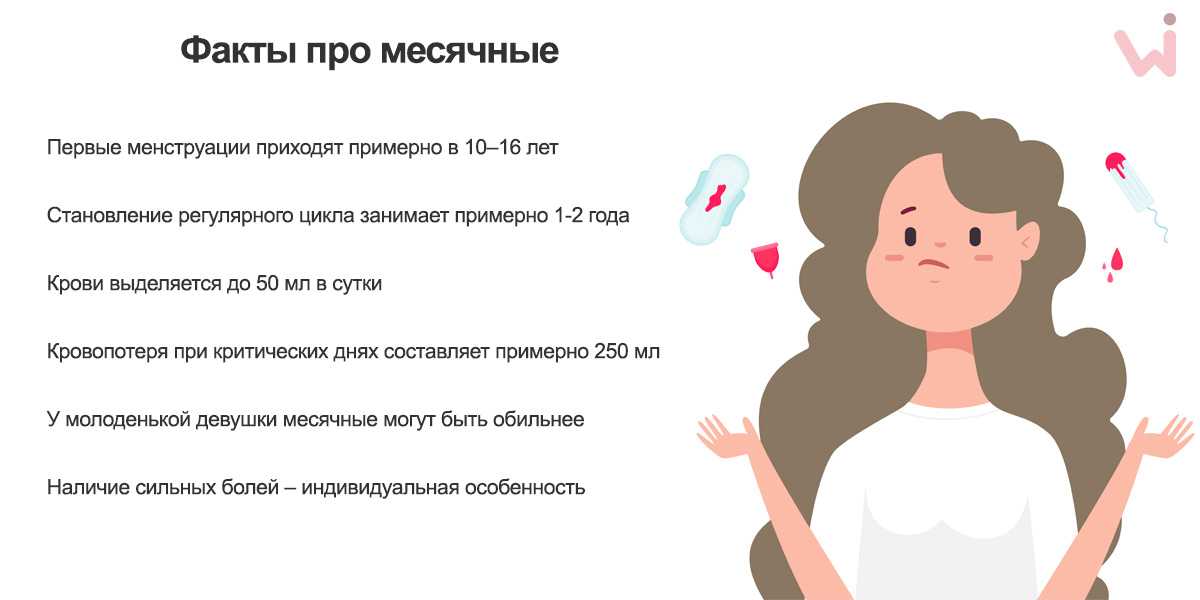How to make a reward chart for your child
Reward charts for child behaviour: tips
Reward charts: what are they?
Reward charts are a way of guiding children towards positive behaviour. They come in several forms, including wall posters and apps.
Reward charts name or show a positive behaviour or goal you want your child to achieve – for example, saying ‘please’, setting the table or doing up their own shoelaces.
Your child’s chart shows how often your child achieves their behaviour goals. For example, if you’re using a wall poster, the chart might have spaces for ticks or stickers. An app might have stars that pop up on the screen. Each time your child does well, your child gets ticks or stickers in the spaces or stars in the app. A certain number of ticks, stickers or stars adds up to a reward for your child.
Reward charts are a powerful way of:
- encouraging positive behaviour, like cleaning teeth without fuss
- discouraging challenging behaviour, like hitting
- rewarding your child for practising new skills, like staying next to the trolley when you’re shopping.
How and why reward charts work
When your child tries hard to change their behaviour, a reward chart can show them when they’ve done a good job. They keep your child motivated.
The rewards themselves reinforce good behaviour and make it more likely to happen again.
And reward charts can help you to focus on the positives in your child’s behaviour. This might be helpful if you sometimes feel frustrated by your child’s behaviour and pay more attention to their negative behaviour.
Reward charts usually work well for children aged 3-8 years.
It’s good to involve your child as much as possible when you’re setting up a rewards chart. For example, talk together about the positive behaviour you’re aiming for and work through the steps below before you start.
Setting up reward charts that work well: steps
1. Clearly and positively describe the behaviour you want to encourage
It’s important to use clear and positive descriptions of the behaviour you want to see.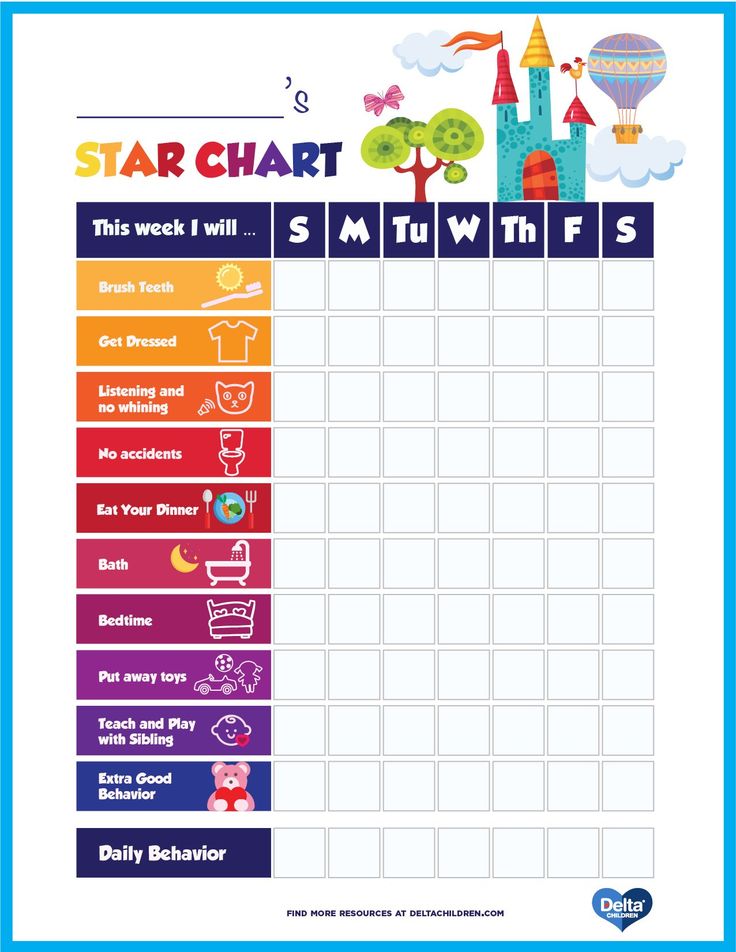 That way you’re encouraging this behaviour.
That way you’re encouraging this behaviour.
For example, ‘Pick up all the toys from your bedroom floor’ is clearer than ‘Tidy your bedroom’. And ‘Put dirty clothes in the laundry basket’ is more positive than ‘Don’t leave your dirty clothes on the floor’.
2. Choose a chart
You can buy or download a chart or app, or make your own chart based on your child’s age and interests. For example, you could use a puzzle as your chart and give your child one piece at a time to build it. Older children might like to make their own charts, perhaps with a drawing or photo of the reward they’re trying to earn.
Wall charts let your child see their progress and feel responsible for it. But note that older children might prefer the chart to be hung in their bedrooms or somewhere else private.
Reward chart apps are portable. You can use them even when you’re out. They’re less visible and more private than wall charts, so they can work well for older children.
When you’ve decided on your chart, decide which stickers or tokens to use.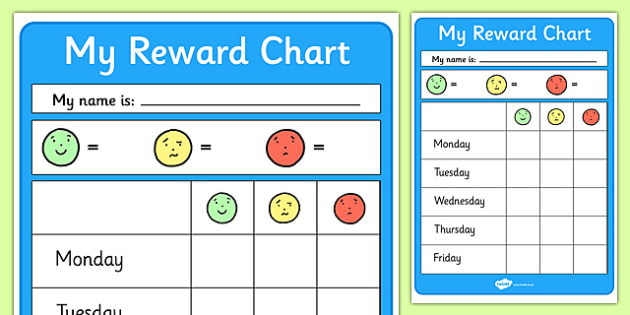 Star stickers work well for younger children, whereas older children might like points or other markers.
Star stickers work well for younger children, whereas older children might like points or other markers.
3. Choose short-term rewards
Most children enjoy collecting stickers or tokens at the start. But the novelty can wear off quickly, and the real reward can seem too far away. So it’s good to choose short-term rewards that you can give often if your child earns them, like a family bike ride, special time with mum or dad, the chance to stay up later than usual, a movie night, or a new book or small toy.
4. Watch carefully for when your child behaves well
This keeps the focus on encouraging good behaviour. For example, your child might be hitting about once a day and you want to change this. You could try looking for 2 times in the day when your child is keeping their hands to themselves, and give your child stickers for those 2 times on the reward chart.
5. Give your child stickers straight after the behaviour
When your child gets stickers straight after the behaviour you want to encourage, it reinforces this behaviour.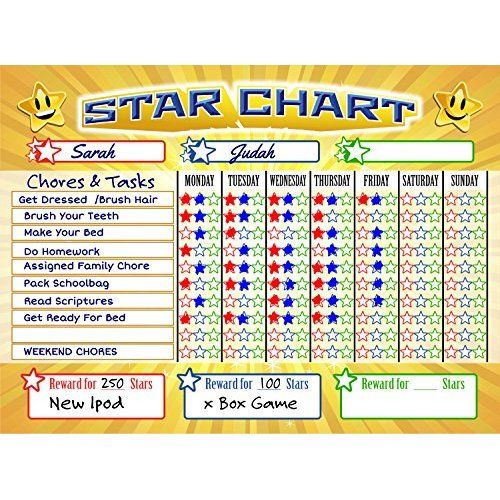 Likewise, some specific praise reminds your child why they’re getting stickers or tokens. For example, ‘I really like the way you and Mia have been playing and sharing toys this morning. Here’s a star for your chart’.
Likewise, some specific praise reminds your child why they’re getting stickers or tokens. For example, ‘I really like the way you and Mia have been playing and sharing toys this morning. Here’s a star for your chart’.
6. Try to stay positive
If your child doesn’t earn a star, it’s best to just move on. Also avoid punishing your child by saying, ‘I’ll take a star away’, or ‘You won’t get any stars if you keep that up!’ Focus on encouraging your child to try again.
7. Move on from the reward chart
You can gradually stop using the reward chart once your child’s behaviour has changed. For example, you might gradually phase out a reward chart by increasing the length of time between stickers or points. If your child is getting a sticker each day for unstacking the dishwasher, you could make it a sticker every 2 days, with praise and hugs as well.
But if you suddenly stop using a reward chart, your child is likely to go back to the old behaviour.
8. Optional step: measure the behaviour
If your child has a particularly challenging behaviour, you might like to measure the behaviour before you start and while you’re using the reward chart. For example, count how many times, or how often, your child hits. Record this when you start using the chart, and then keep track of it as the days pass. This will help you know whether the reward chart is working.
You and your child can stay positive and realistic by looking for small changes to reward before working your way up to a big change. For example, if you want your child to help more with tidying up, you could start by rewarding your child for picking up the blocks. Then it could be the blocks and the dress-ups, and so on.
When reward charts aren’t working: things to try
Not all children respond to reward charts. That’s OK. Different things motivate different children. But if reward charts don’t seem to be encouraging positive behaviour in your child, there are some issues you can check and consider adjusting.
Your child has siblings who are very good at getting rewards
This situation might discourage your child from trying. If you think this might be the issue, you could try changing the rewards to things only your child likes or can achieve. For example, if your child likes puzzles and their siblings don’t, you could try giving your child a small puzzle as a reward.
Your child can get rewards in other ways
In this situation, the reward won’t be effective. For example, rewarding your child with a play at the swimming pool won’t work so well if your child usually gets a play swim after swimming lessons.
Your child isn’t getting stickers or stars consistently when the positive behaviour happens
In this situation, your child might be confused about what behaviour you expect. But it’s easy to fix – just make sure to watch carefully and give your child a sticker or star every time you see the positive behaviour.
Your child isn’t getting rewards as soon as they earn them
In this situation, your child might feel that their efforts towards behaving well aren’t important or valued.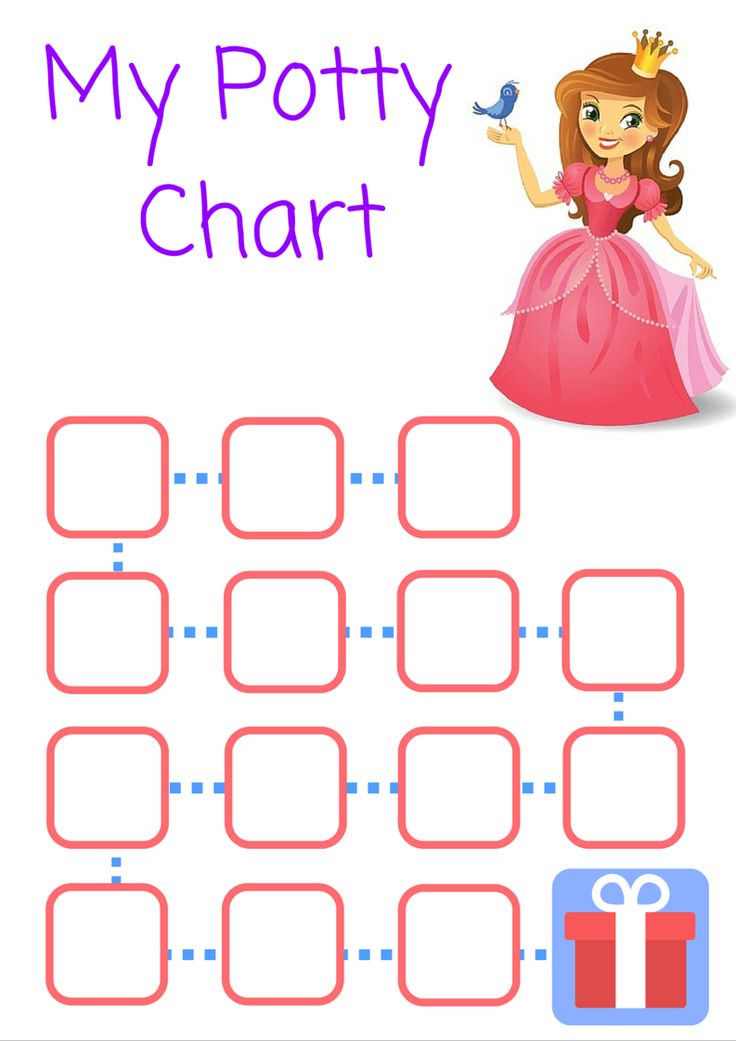 Here are a couple of things you can do:
Here are a couple of things you can do:
- Make sure to follow through straight away when your child earns the reward.
- Choose rewards that are easy for you to give straight away. For example, a family bike ride might be easier to give than a trip to the water park.
Your child is bored with reward charts or thinks they’re too ‘grown up’ for reward charts
This can happen if you’ve been using reward charts for a while. There are a few things you can try in this situation:
- Offer your child a choice of rewards to spend their stickers on. For example, 5 stickers = a game with mum or extra time before lights out, 10 stickers = a trip to the park or a small toy.
- Offer your child a choice of good behaviour. For example, ‘Do you want to tidy your room or set the table?’ This gives your child a sense of control, which can be very motivating.
- Give your child plenty of praise for good behaviour. This can include nonverbal praise.
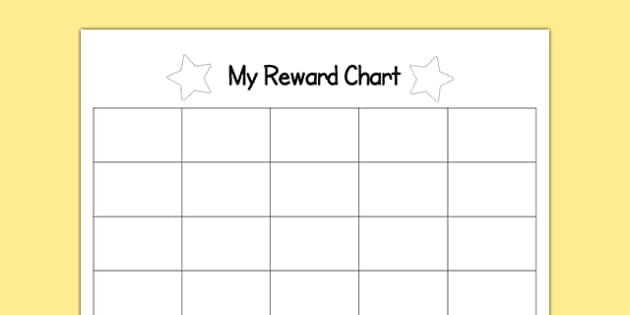 For example, thumbs up, smiles and high fives are powerful ways to show you’re impressed by your child’s behaviour.
For example, thumbs up, smiles and high fives are powerful ways to show you’re impressed by your child’s behaviour. - Surprise your child with rewards for good behaviour. For example, ‘Thanks for tidying your room – let’s go to the park to celebrate’.
If reward charts aren’t working for your child and you have concerns about your child’s behaviour, it’s a good idea to talk with your child and family health nurse or GP.
Reward charts can work well for autistic children or children with disability. You could ask your child’s disability professionals how to tailor a reward chart to your child’s needs.
Behavior Charts and other Resources
What are behavior charts?A behavior chart (otherwise known as a reward chart or sticker chart) helps children understand that it is more rewarding to behave well than to misbehave.
Kids initially start behaving well to get a sticker on their chart, please their parents and teachers, be praised and complimented, or maybe even get a reward for completing their behavior chart.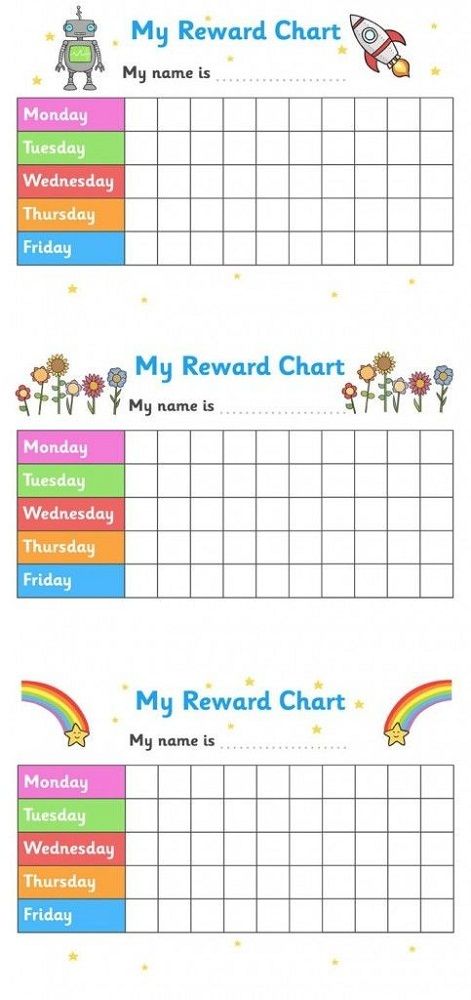 Eventually, good behavior comes naturally and kids start reaping the benefits. They start enjoying their relationship with their parents, they love not being yelled at, getting good grades, improving self-esteem, etc. In time, children will actually set limits for themselves and want to behave well!
Eventually, good behavior comes naturally and kids start reaping the benefits. They start enjoying their relationship with their parents, they love not being yelled at, getting good grades, improving self-esteem, etc. In time, children will actually set limits for themselves and want to behave well!
There are two kinds of behavior charts on this site: charts that focus on a specific behavior or reward chart templates you can use for any purpose.
Reward or behavior chart templates are very flexible and can be customized to your needs. Most of our behavior charts can also be personalized with your child’s name, goals, and photo. All of our charts are free including customized charts.
According to the CDC, a reward program such as a sticker chart can help young kids. It can help get kids to do things they are not already doing or encourage them to keep doing things they are already doing. It works well for behaviors that become a habit like staying in bed after being tucked in, using the potty, or brushing one’s teeth.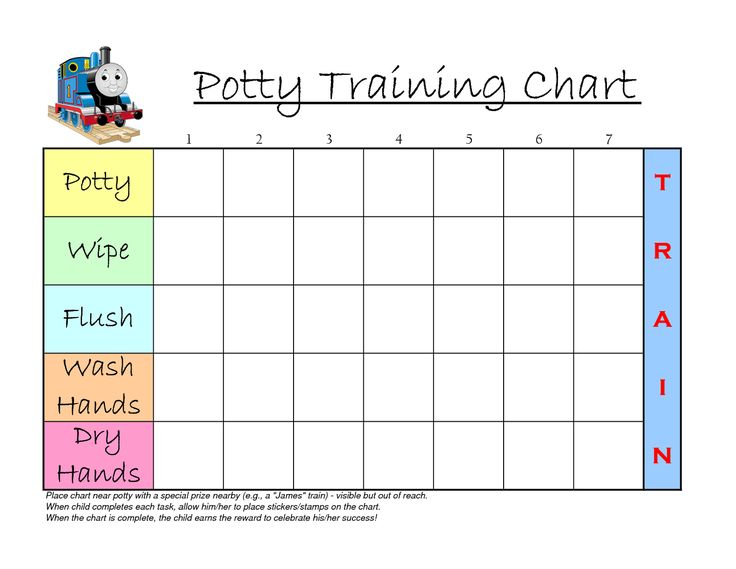
Reward Charts for Kids
How do reward charts work?
A reward chart is used to promote and encourage good behavior by emphasizing a child’s good behavior instead of focusing on the bad behavior. Studies have shown that praising good behavior is far more effective than reprimanding children for their bad behavior. The problem is that it is much easier to focus on bad behavior since it is difficult to ignore. Sticker charts help remind you to praise good behavior by placing a star or sticker on the chart. This sends a message to the child that he or she is being rewarded for acting in that manner. Your child, in turn, will want to receive more positive feedback so he or she will be motivated to behave in a similar manner. After all, who doesn’t want to be praised? Each time you stick a sticker on the reward chart you are basically taking the time to stop and praise your child. It also makes it clear to the child that he or she is acting in a manner that you appreciate, like, and want to reward.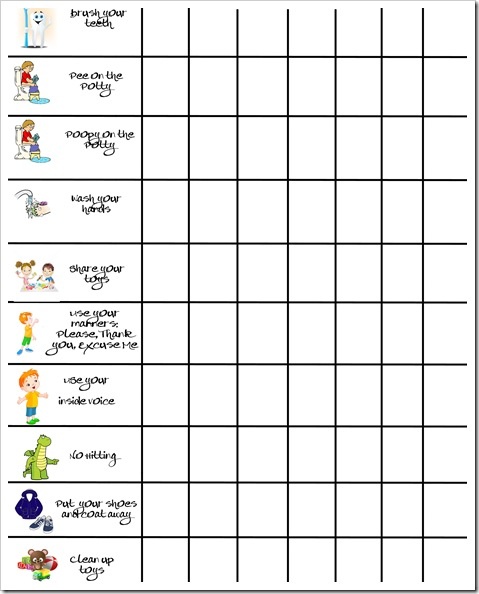
It is important that the whole process is fun or else it will not be as effective. Try to choose a chart that your child likes from our huge selection of free printable behavior charts. Choose a sticker chart together with your child and give it a try. The only thing that you have to lose is your child’s bad behavior!
Chore Chart
Are you looking for a chore chart template to keep track of your child’s chore list? We have a huge selection of family chore charts and printable chore charts for girls and boys. We also offer a chore chart maker to create custom chore charts. You will also find articles on how to get your kids to do chores and how chores can benefit kids.
Printable Certificates
We offer a selection of free printable certificates to award your students or children for good behavior, reading, effort, sport, or skills. Printable certificates are an excellent way to reward good behavior.
Potty Training Chart
We offer a potty chart template and a selection of free printable potty charts.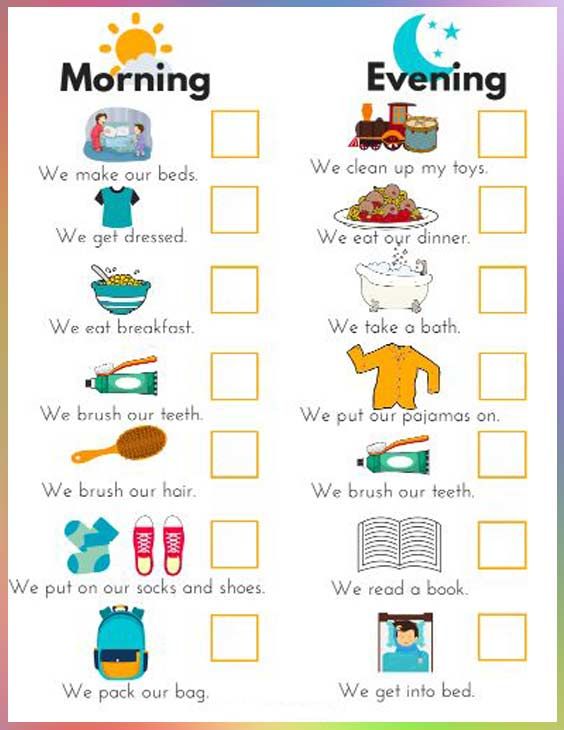 You will also find additional free tools to help with the potty training process such as information regarding:
You will also find additional free tools to help with the potty training process such as information regarding:
- When to start potty training
- How to potty train
- Potty training rewards
Charts for Kids
We offer a variety of different charts for kids such as:
- Behavior charts
- Sticker charts
- Star charts
- Charts to solve sleep issues
- Star charts for kids
- Potty training charts
- Reward charts with your favorite character
Tools for Parents
All parents love their children. The problem is that sometimes raising and disciplining kids becomes so overwhelming that we don’t enjoy parenting as much as we could and should. The goals of this site are to provide free tools and resources in order to:
- Make parenting more effective, rewarding, and enjoyable.
- Improve your relationship with your children.
- Give you more confidence in your parenting.
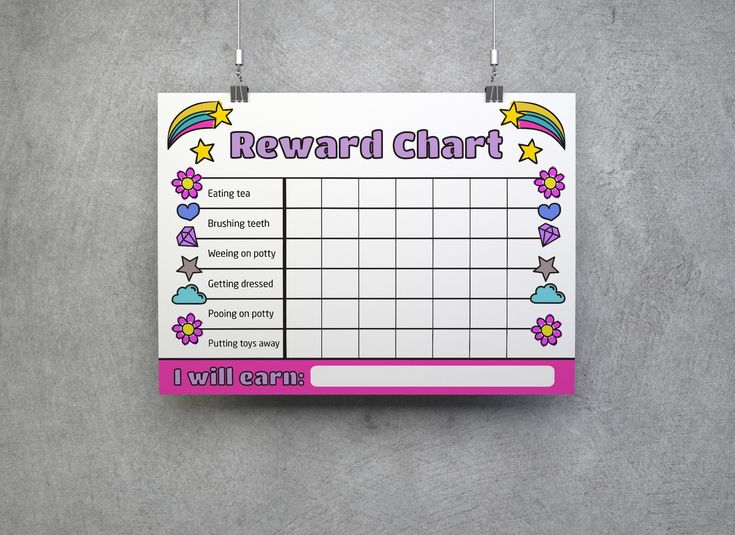
- Correct misbehavior using positive parenting techniques.
- Help parents who are feeling helpless and frustrated.
- Increase your knowledge and improve your parenting skills.
- Get your family to work as a team with common goals.
- Build positive relationships with the entire family.
This site is based on positive parenting techniques. The ultimate goal of positive parenting is to get your child to want to behave well.
Feelings Chart
A selection of feelings charts with a printable list of feelings. These charts can help your students or children express themselves.
Tools for Teachers
Our goal is to provide teachers with classroom management tools such as reading rewards, classroom rewards, and other free tools to reward and motivate students. We know that you have a really difficult job but we are here to help! If you require additional resources, then please comment below and we will try to create them for you!
Reading Rewards
A huge selection of free printable reading rewards to encourage kids to read.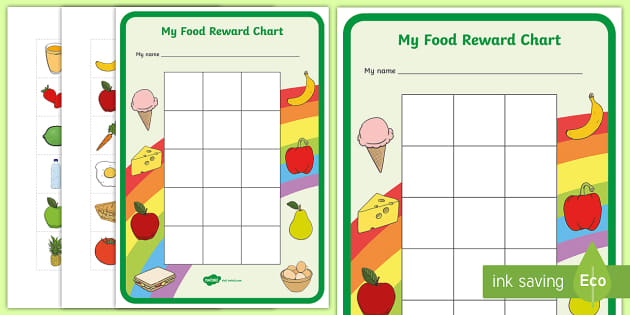 You’ll find reading logs to track reading and reading rewards to reward kids who reach their goals. We offer printable certificates and other awards such as book bucks (play money template), bookmarks, and more. You are sure to find something that will motivate your children or students to read more!
You’ll find reading logs to track reading and reading rewards to reward kids who reach their goals. We offer printable certificates and other awards such as book bucks (play money template), bookmarks, and more. You are sure to find something that will motivate your children or students to read more!
Reward Bucks
Create reward bucks with our free fake money template printables.
Holiday or Events
Motivation chart or reward charts: encouraging positive behavior in children
Rewards reinforce positive behavior. They also help you stay positive.
If reward charts don't work, you can change how you use them.
Reward charts: what are they?
Reward Charts and Motivation Charts are a way to guide children towards positive behavior. They come in several forms, including wall posters and applications.
In reward charts, list or show the positive behavior or goal you want your child to achieve, such as saying “please,” setting the table, or tying their own shoelaces.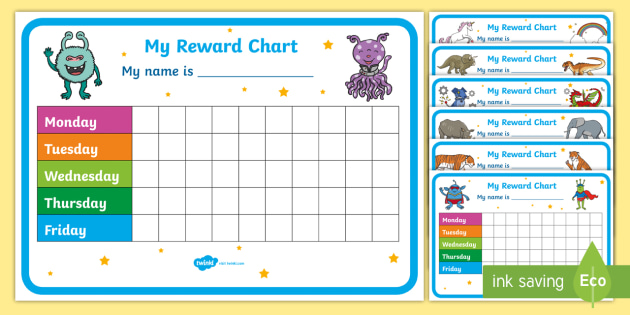
Your child's chart shows how often your child achieves their behavioral goals. For example, if you are using a wall poster, the diagram may have checkmarks or stickers. The application may have asterisks that appear on the screen. Every time your child does well, they get ticks or stickers in spaces or asterisks in the app. A certain number of checkmarks, stickers, or stars constitute a reward for your child.
Reward charts are a powerful way to:
reward positive behaviors like brushing your teeth without fussing
don’t reward challenging behaviors like hitting
reward your child for practicing new skills like standing next to cart when you go shopping.
How and why reward charts work:
When your child is struggling to change his behavior, a reward chart can show him when he did a good job. They keep your child motivated.
By themselves, rewards reinforce good behavior and make it more likely to be repeated.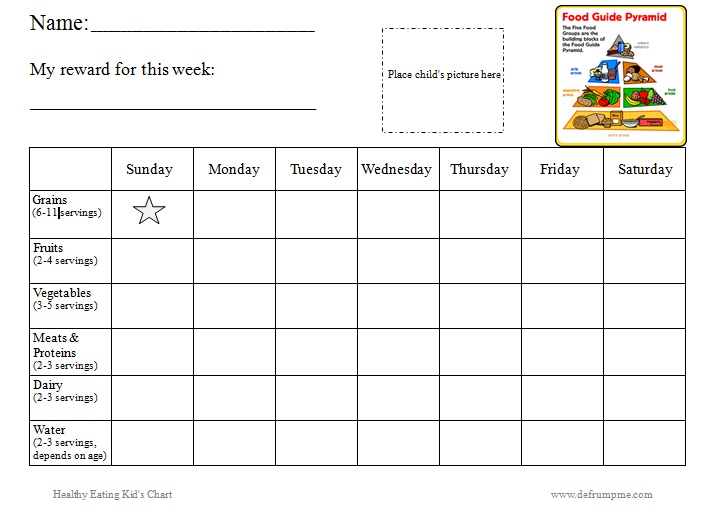
Reward charts help you focus on the positive aspects of your child's behavior. This can be helpful if you sometimes feel frustrated with your child's behavior and pay more attention to their negative behavior.
Reward charts usually work well for children aged 3-8.
When setting up a reward chart, it's a good idea to get your child involved as much as possible. For example, discuss together the positive behavior you are striving for and do the following before you begin.
Setting Up Reward Charts That Work Well: Steps
Clearly and positively describe the behavior you want to reward
It is important to use clear and positive descriptions of the behavior you want to see. Thus, you encourage this behavior.
For example, “Clean up all the toys from the floor in your bedroom” is clearer than “Tidy your bedroom.” And “Put dirty clothes in the laundry basket” is more positive than “Don’t leave dirty clothes on the floor.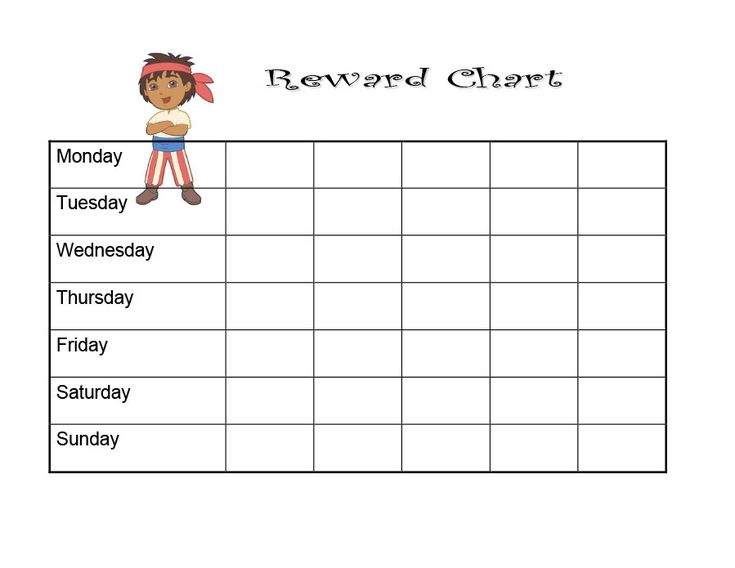 ”
”
Select chart
You can buy or download a chart or app, or create your own chart based on your child's age and interests. For example, you can use a puzzle as a diagram and give your child one piece at a time to complete. Older children may want to make their own charts, perhaps with a drawing or photo of the award they are trying to earn.
Wall charts allow your child to see their progress and feel responsible for it. But be aware that older children may prefer to have the table hung in their bedrooms or some other secluded spot.
Reward chart applications are portable. You can use them even when you are not at home. They are less visible and more private than wall charts, so they can work well for older children.
Once you've decided on your table, decide which stickers or tokens to use. Star stickers are good for younger kids, while older kids might like dots or other markings.
Print out the following motivation chart:
Choose short-term rewards
Most children like to collect stickers or tokens in the beginning.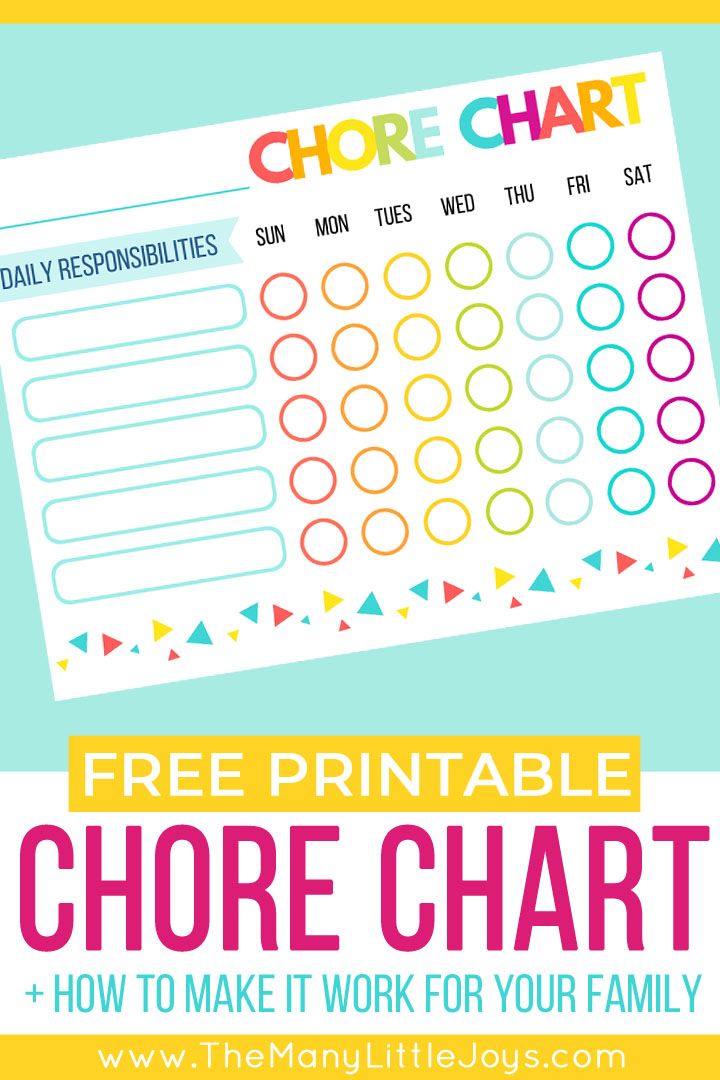 But the novelty can quickly fade, and the real reward may seem too far away. So it's good to choose short-term rewards that you can give often if your child earns them, such as a family bike ride, a special time with mom or dad, staying up late, a movie night, a new book, or a small toy.
But the novelty can quickly fade, and the real reward may seem too far away. So it's good to choose short-term rewards that you can give often if your child earns them, such as a family bike ride, a special time with mom or dad, staying up late, a movie night, a new book, or a small toy.
Pay close attention to when your child behaves well
This allows you to focus on rewarding good behavior. For example, your child may hit about once a day and you want to change that. You can try to find 2 times a day when your child keeps their hands to themselves and give your child stickers for those 2 times in the rewards table.
Give your child stickers right after a behavior
When your child gets stickers right after a behavior you want to reward, it reinforces that behavior. Likewise, some praise reminds your child why they are getting stickers or tokens. For example: “I love how you and Mia played and shared toys this morning. Here's a star for your chart'.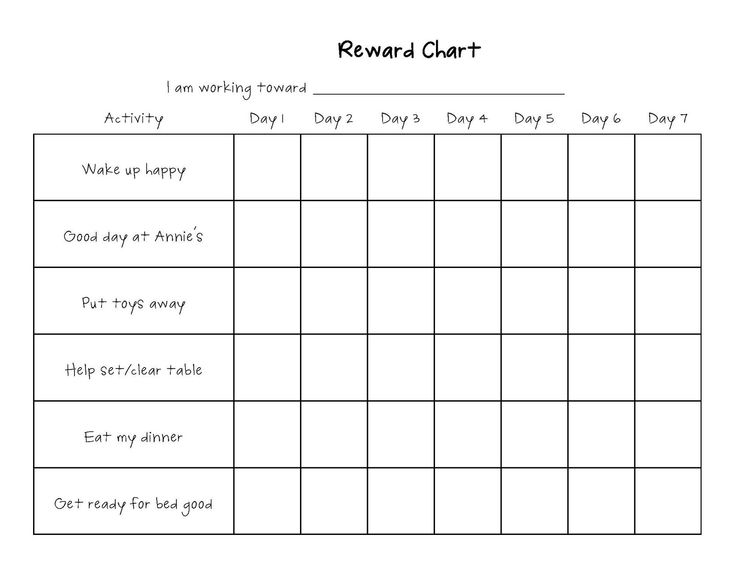
Try to stay positive
If your child doesn't earn a star, it's best to just move on. Also avoid punishing your child by saying 'I'll take a star' or 'You won't get another star if you keep going like this!' Focus on encouraging your child to try again.
Move away from the reward chart
You can gradually stop using the reward chart as your child's behavior changes. For example, you can phase out the reward chart by increasing the amount of time between stickers or points. If your child gets a sticker every day for unpacking the dishwasher, you can make a sticker every 2 days, along with praise and hugs.
But if you suddenly stop using the reward chart, your child will most likely return to the old behavior.
Optional step: measure the behavior
If your child has a particularly difficult behavior, you can measure the behavior before and during the reward chart.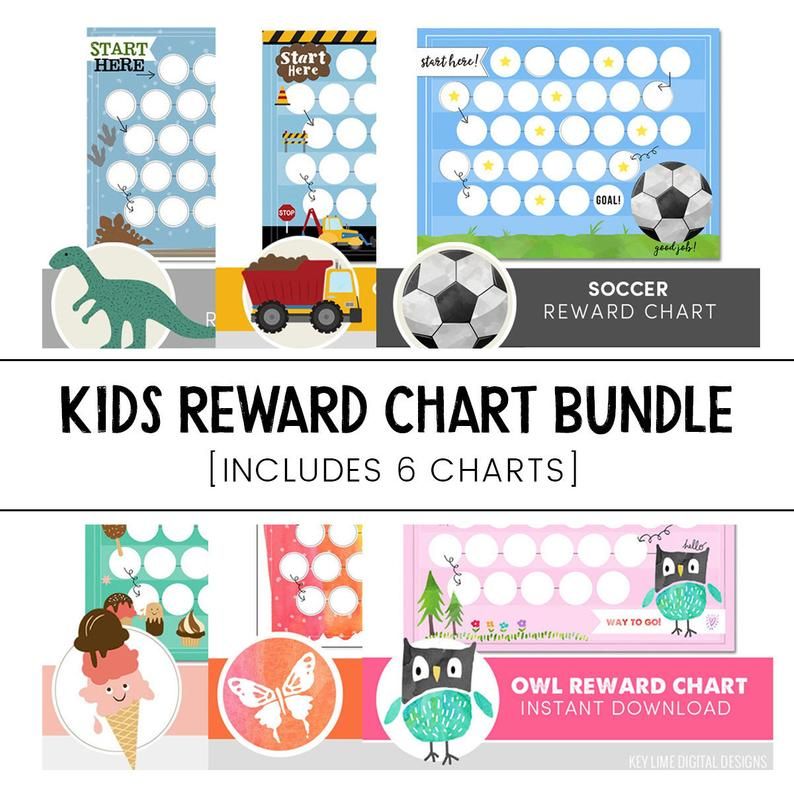 For example, count how many times or how often your child hits. Write it down when you start using the chart, and then keep track of it as the days go by. This will help you know if the reward table is working.
For example, count how many times or how often your child hits. Write it down when you start using the chart, and then keep track of it as the days go by. This will help you know if the reward table is working.
You and your child can stay positive and realistic, looking for small reward changes before moving on to big changes. For example, if you want your child to help with cleaning more, you could start by rewarding your child for collecting blocks. Then it can be cubes, dressing up and so on.
When Reward Charts Don't Work: What to Try
Not all children respond to reward charts. Everything is fine. Different things motivate different children. But if reward charts don't seem to encourage your child's positive behavior, there are some issues you can check out and consider making adjustments for.
Your child has siblings who are very good at receiving awards
This situation can discourage your child from trying.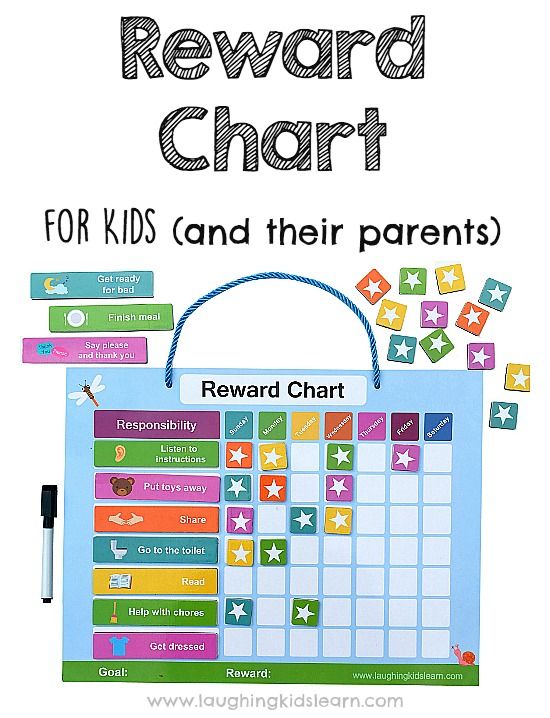 If you think this might be a problem, you can try changing the rewards to something that only your child likes or can achieve. For example, if your child loves puzzles but his siblings don't, you might try giving your child a small puzzle as a reward.
If you think this might be a problem, you can try changing the rewards to something that only your child likes or can achieve. For example, if your child loves puzzles but his siblings don't, you might try giving your child a small puzzle as a reward.
Your child may receive rewards in other ways
In this situation, the reward will not be effective. For example, encouraging your child to play in the pool won't work so well if your child usually swims after swimming lessons.
Your child does not get stickers or stars all the time when positive behavior occurs
In this situation, your child may be confused about what behavior you expect. But it's easy to fix - just keep an eye out and give your child a sticker or a star every time you see a positive behavior.
Your child does not receive rewards as soon as they earn them
In this situation, your child may feel that their efforts in good behavior are not important or appreciated.
Here are a few things you can do:
Be sure to do these as soon as your child receives the reward.
Choose rewards that are easy for you to give right away. For example, a family bike ride might be easier to organize than a trip to a water park.
Your child is fed up with reward charts or thinks they are too "grown up" for reward charts
This can happen if you have been using reward charts for a while.
There are several things you can try in this situation:
Have your child choose rewards to spend stickers on. For example, 5 stickers = a game with mom or extra time before bedtime, 10 stickers = a trip to the park or a small toy.
Offer your child a choice of good behaviour. For example, ‘Do you want to clean your room or set the table?’ This gives your child a sense of control, which can be very motivating.
Praise your child for good behavior. This may include non-verbal praise. For example, thumbs ups, smiles, and high fives are powerful ways to show that you're impressed with your child's behavior.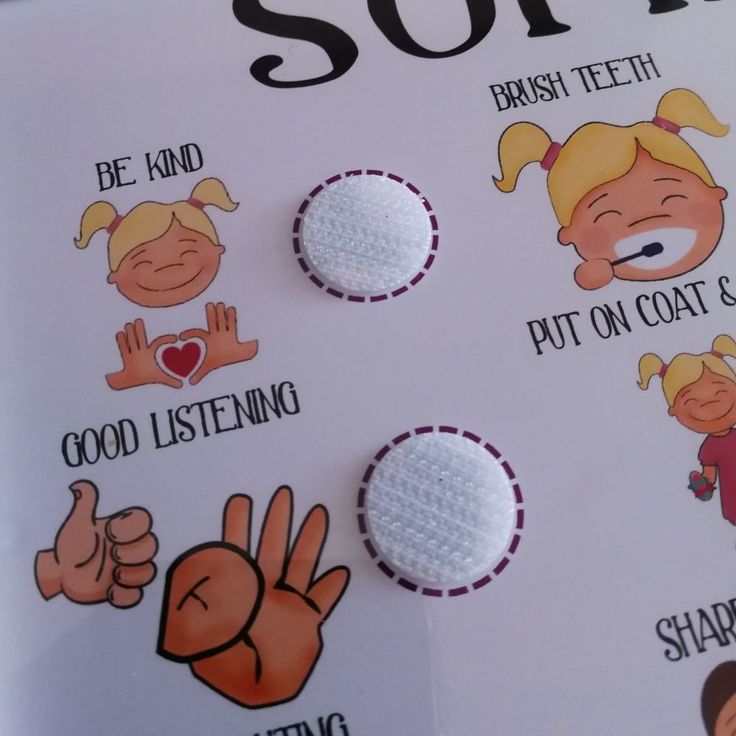
Surprise your child with rewards for good behavior. For example, “Thanks for cleaning your room – let’s go to the park to celebrate.”
If reward charts are not working for your child and you have concerns about your child's behavior, it is a good idea to talk to your child and the family nurse or general practitioner.
Reward charts can work well for children with autism or children with disabilities. You can ask your child's disability professionals how to tailor the rewards chart to your child's needs.
Creating a table of achievements. Problem child [How to deal with him and yourself]
What is an achievement table (or sticker table)? It is a way of daily recording manifestations of desirable behavior. The table clearly shows how many times the child performed the desired action and what reward he can earn for this. Research shows that such a table can be useful in the process of parenting (for children of all ages and even adults). It honestly shows the achievements of the child and his reward.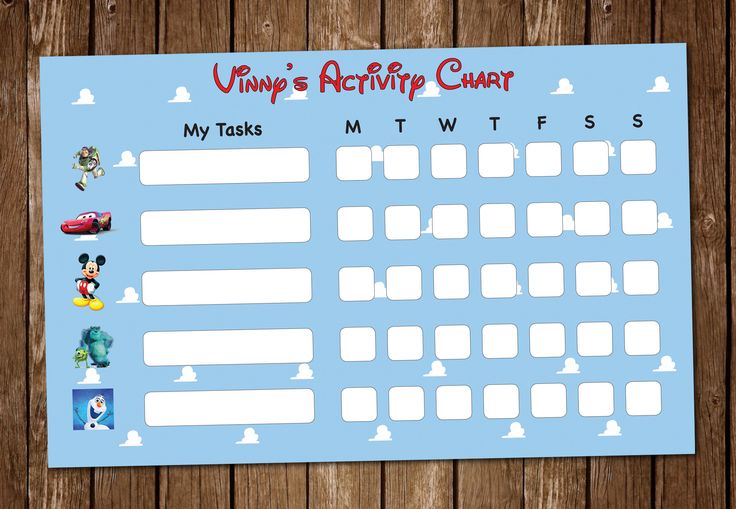 Children are interested in working with the table and watching how points are added to it. In addition, she reminds parents to complete the program (we are usually very busy!) and that the child needs to be praised. The very presence of a table on the refrigerator is a predetermining condition for the desired behavior to occur more often.
Children are interested in working with the table and watching how points are added to it. In addition, she reminds parents to complete the program (we are usually very busy!) and that the child needs to be praised. The very presence of a table on the refrigerator is a predetermining condition for the desired behavior to occur more often.
Parents sometimes diligently draw tables, creating real masterpieces. They figure that a child who likes the table itself will be better at cooperating with them. I saw special stickers with cartoon characters; once, instead of glasses and tokens, images of ready-made breakfasts (rings and balls) were used. Butterflies were “planted” on another table in the form of a garden, etc. This, of course, is great, and your creativity has room to unfold. However, studies have not found any significant relationship between the attractiveness of the table and the effectiveness of the program. The simplest table works just as well. The table is simply a way to track the process of behavior and reward formation, namely reinforcement training, which makes the program effective.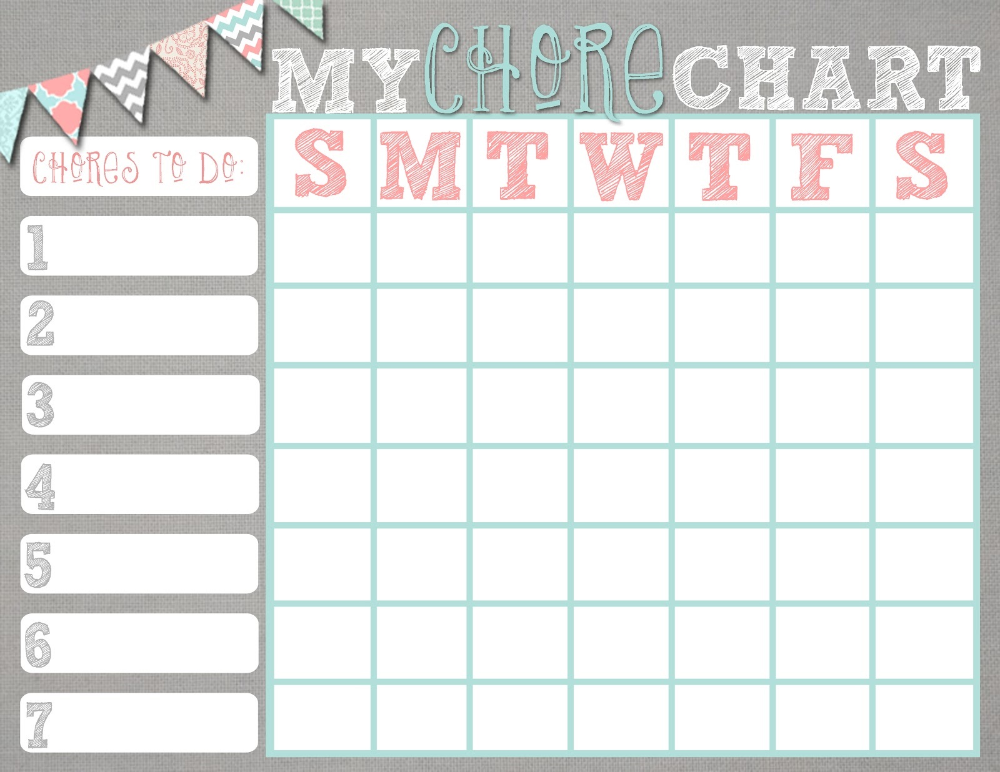
The secret of success is not in the table itself, but in the way it is used. Decades of research have allowed us to develop the most effective table design and methods for its correct use. Jen and Mel didn't have to strive for perfection. However, I had to explain important points to them.
We have created a very simple table for Davy. The left column contains the days of the week. The boy could earn points for going to bed in the evening, as well as for training this process during the day. Therefore, two columns were added to the table. Markers denoting points (asterisks, stickers, ticks, etc.) could be placed in the cells. On the day, Davy could earn up to 4 points: 2 for the "correct" laying to bed and 2 for training. In exceptional cases, he earned 6 points if the training was repeated one more time on that day. I asked the parents to find out the boy's preference for glasses. Davy really liked dinosaurs, so we decided to mark points with little dinosaurs.
Weekly total ________________
It would be possible to add Saturday and Sunday, but it is better to start with five working days.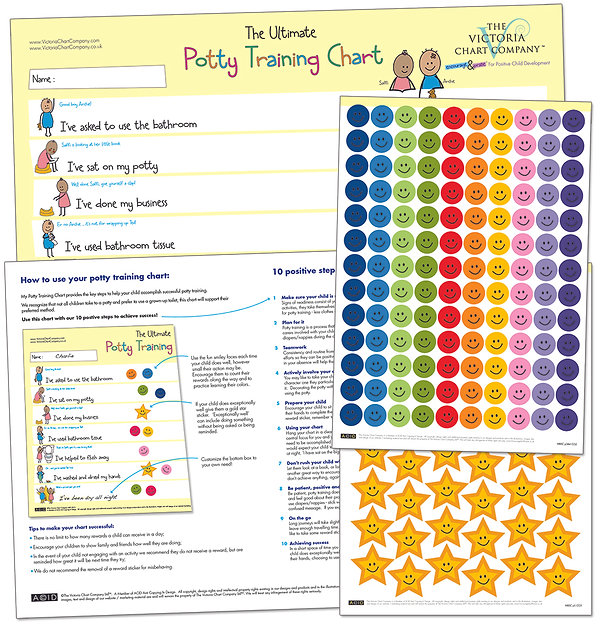
Images of dinosaurs were placed in each cell, corresponding to the number of points earned.
If on some day Davy did not earn any points, a dash was put in the cell (do not leave an empty space!).
You must decide in advance whether the program will run on weekends. If you have the slightest doubt, leave only 5 days or even less. It is better to do the program well for 5 days than to do it badly for 7. (I have recommended to some of my clients that they work on behavior only a day or two a week if the family situation did not allow them to devote more time to the program.) Consistency is much more important. execution of the program, rather than its continuous application.
Now the important question: where to place the table. A lot can depend on this. It is better to hang in a conspicuous place. For example, on the refrigerator. The more often your eyes fall on the table, the sooner you will remember the program and praise the child. And it is useful for a child to have a table in front of his eyes.